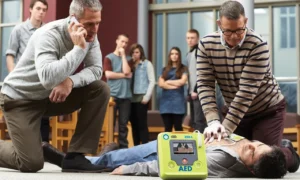The logistics sector demands leaders who assume tactically, act decisively, and drive real makeovers. Artur Gronus satisfies that need with accuracy. As the CEO of Cargoos, he integrates financial style, behavior layout, and advanced modern technology to redefine how modern logistics runs. Gronus does not comply with patterns; he sets them. His leadership transforms complexity into clarity and disturbance into possibility. By embedding innovation right into every layer of the Cargoos platform, he delivers a version for scalable, smart logistics in a rapidly advancing international economy.
A Vision Forged in Finance
Artur Gronus brings deep competence in financial design to Cargoos. He applies strenuous systems thinking and data-driven modeling to form a management style where finance ends up being a critical device rather than an obstacle. At Cargoos, he presented real-time economic visibility to procedures, permitting teams to track margins, dangers, and efficiency without delay.
His management gets rid of typical silos. Dashboards reveal real-time margin trends. The cost of delay becomes visible and actionable. Designers and UX groups get an understanding of how user interface decisions influence customer retention. By lining up money with every division, Gronus guarantees that operational decisions are grounded in economic quality.
Behavioral Design as Operational DNA
Gronus treats layout as a feature, not decor. He firmly insists that every customer interaction must sustain clarity and reduce mental exhaustion. At Cargoos, this concept appears in everything from user-friendly control panels to agreement language that cultivates understanding and dependence.
He educates teams to compose forms and notifications in a psychologically attuned tone. Designers create interfaces that lead to choices without complication. Invoices, reports, and records follow a structure that feels familiar, not foreign. All information builds customer confidence and enhances the brand name as a dependable system, not simply an aesthetic identification.
Tech-Intelligence: Building a Living, Adaptive Supply Chain
Gronus sees logistics as a complex, interconnected system. He constructs Cargoos’s modern technology to grow within that intricacy as opposed to avoiding it. He creates a living platform that combines credible facilities with real-time analytics and versatile systems.
He implemented blockchain-based logging, smart contracts, and immutable journals to guarantee openness and decrease conflicts. Every activity within the supply chain, from assigning loads to verifying distributions, is taped in a common journal. This record keeps all stakeholders notified and responsible.
Additionally, Gronus introduced threat detection formulas and automated ranking up. The system flags duplicated hold-ups and feeds insights back into directing and valuing designs. Disagreements get solved quickly since the platform shows objective data. This continual feedback creates a supply chain that adjusts, self-corrects, and enhances with time.
Time as Capital and Delay as Strategy
Gronus treats time as a quantifiable and calculated asset. He comprehends that every minute of delay develops economic and operational consequences. Cargoos tracks preparation exactly and makes use of necessity, racking, volatility mapping, and predictive arrival alerts to stay ahead of troubles.
As opposed to offering pre-calculated distribution price quotes, the platform presents forecast arrays with confidence degrees. Groups can mimic different outcomes and select methods that match their threat resistance. Forecasting conferences become critical planning sessions as opposed to reviews of fixed data. With this approach, Cargoos transforms the time level of sensitivity right into a competitive advantage.
Antifragile Architecture That Thrives Under Pressure
Gronus prepares Cargoos to improve under pressure. He designs systems to gain strength from interruption. His stress-first method entails, on a regular basis, examining the firm’s capacity to work under worst-case problems.
He cross-trains teams to ensure redundancy. Modular systems permit elements to fail without triggering complete malfunctions. Throughout disruptions such as port blockages or gas cost spikes, the system continues running with minimal effect.
As opposed to preventing failure, Gronus motivates the group to rehearse it. They rotate functions, pierce emergency situation procedures, and build behaviors that sustain adaptability. Cargoos doesn’t respond to the situation; it practices for it, learns from it, and evolves.
Finance, Design, and Tech: A Unified Operating Model
We do not differentiate financing, style, and modern technology into unique divisions. He weaves them with each other right into a solitary, unified operating viewpoint. This integration defines Cargoos’s individuality in the logistics sector.
- Trust remains visible, not assumed. All users operate with transparency built into the system.
- Brand behavior reinforces reliability, not just visual identity. Customers trust the experience, not just the logo.
- Time becomes a managed asset, not a side effect. Teams treat delays as strategic decisions, not inevitable failures.
- Forecasting reflects reality, not wishful thinking. The platform prepares teams for a range of outcomes.
- Disruption becomes training, not breakdown. Teams learn from volatility and strengthen processes.
- Finance becomes a shared tool, not a departmental wall. Everyone understands cost, margin, and risk in context.
This approach permits Cargoos to scale effectively without blowing up. It constructs an organization that operates under constant pressure and continues to advance with changing market demands.
Industry Impact and Forward Momentum
Cargoos began procedures in 2013 in Chicago. Since then, it has grown into an extremely qualified logistics system that offers a Lot of money to 500 customers and mid-market firms. Its service offerings include complete truckload (FTL), less-than-truckload (LTL), intermodal shipping, warehousing, and real-time tracking.
Gronus drives this growth by mixing innovation with disciplined administration. He purchases facilities that sustain innovation without losing functional control. He urges partnership across divisions and firmly insists that groups comprehend the systems they work within. His leadership transforms a typical logistics model right into a modern-day, resilient supply chain remedy.
In 2025, Cargoos took part in major logistics seminars and industry forums. Gronus utilized these chances to promote more powerful public-private collaborations and smarter synchronization across logistics networks. His message concentrated on lasting durability, smart systems, and the shared responsibility to improve the industry.
Conclusion: Building the Future, Not Reacting to It
Artur Gronus sticks out in a sector that usually has problems with inefficiency and sluggish adaptation. He does not simply respond to change; he prepares for it, lays it out, and leads with confidence. At Cargoos, he creates systems that incorporate economic knowledge, individual actions, and innovation to expect obstacles and unlock performance.
He leads by example. He breaks down conventional wall surfaces between divisions. He requires accountability via data and earns a trust fund through openness. Under his leadership, Cargoos operates not just as a logistics company but also as a system for discovery, development, and continual renovation.
Gronus does not develop for security. He constructs for strength. He forms Cargoos right into a logistics business that grows in uncertainty, adapts with purpose, and ranges with precision. His legacy will not rest on performance alone but on how efficiently he redefined advancement through financing and modern technology.



































